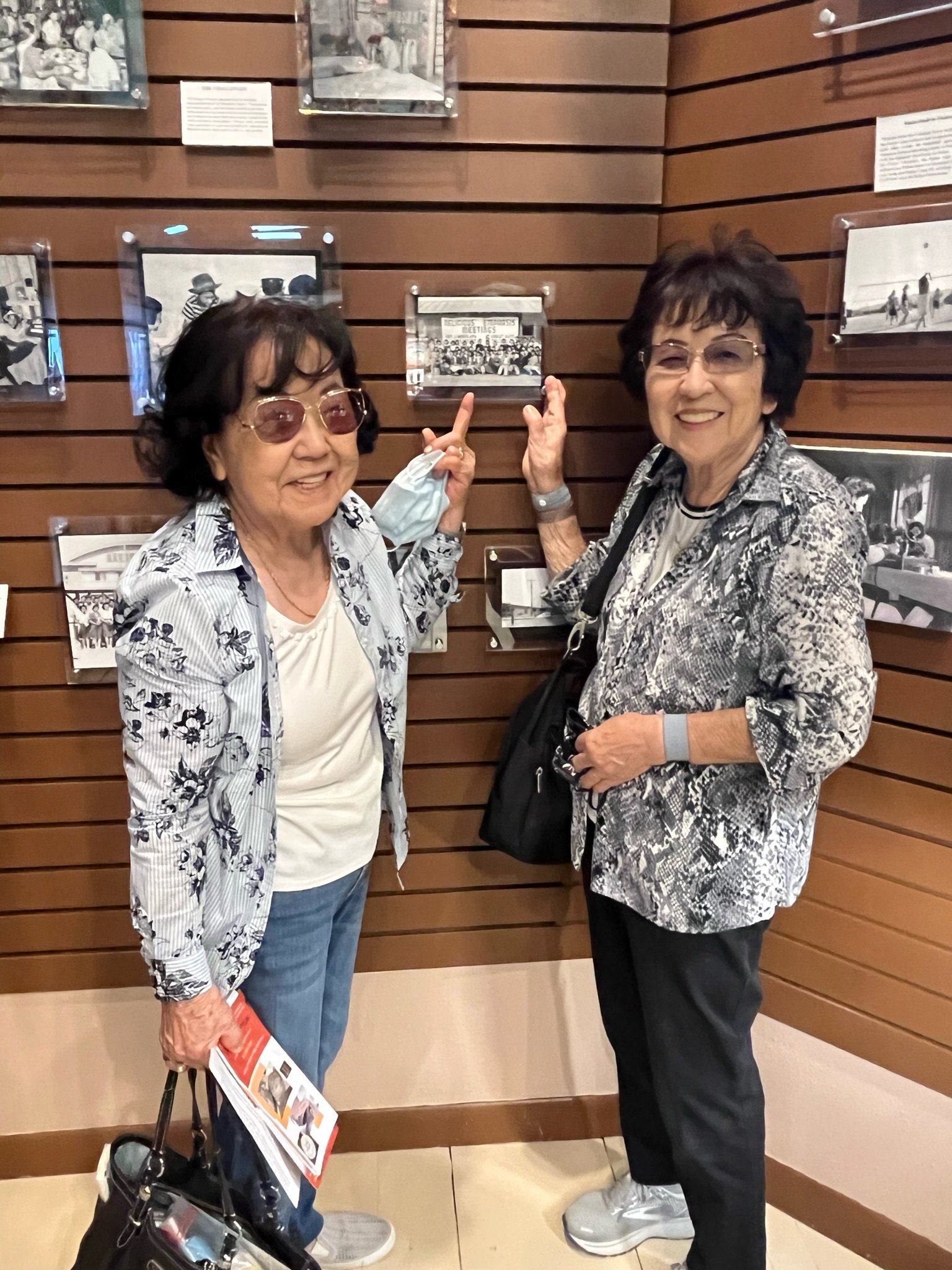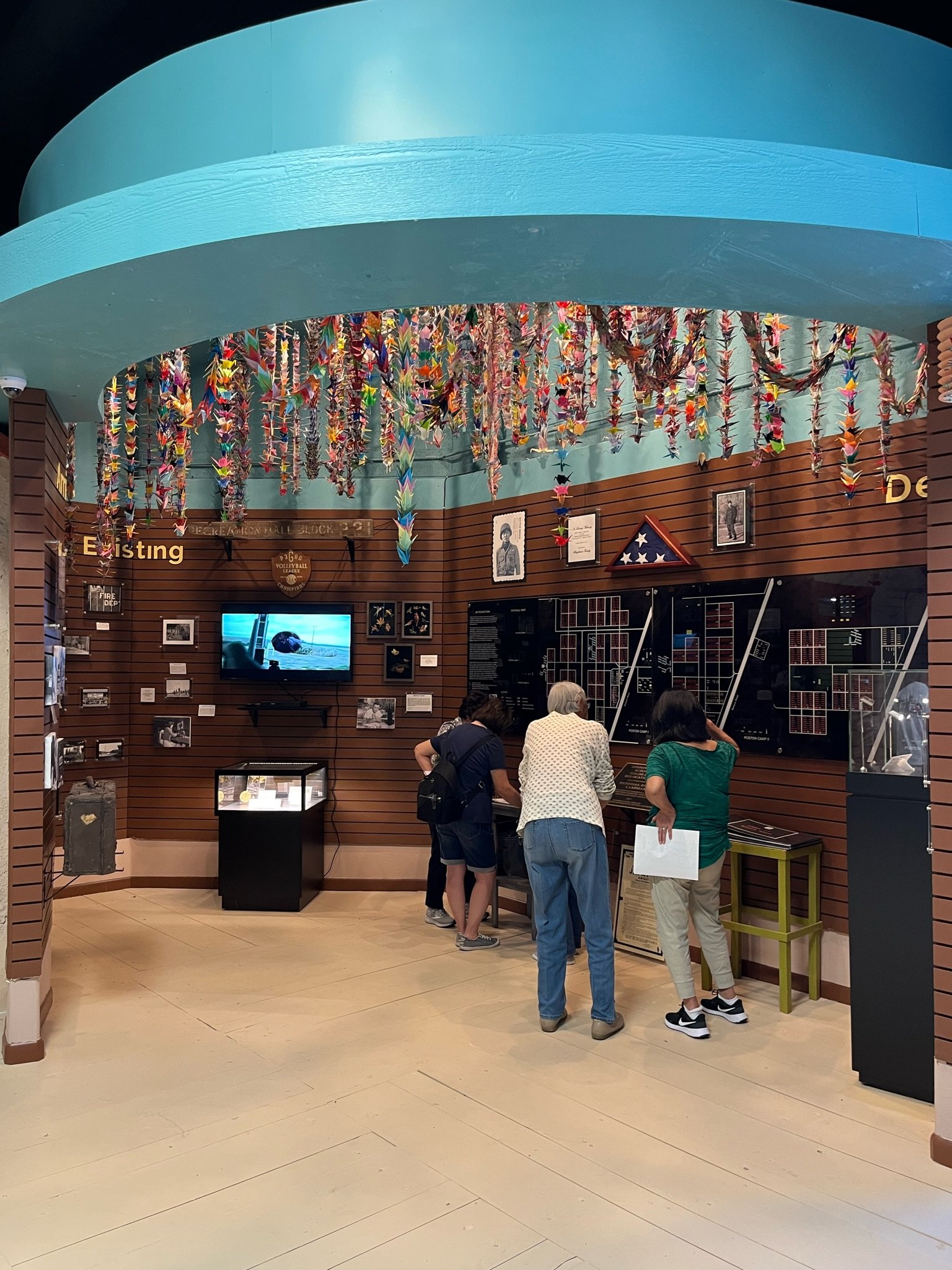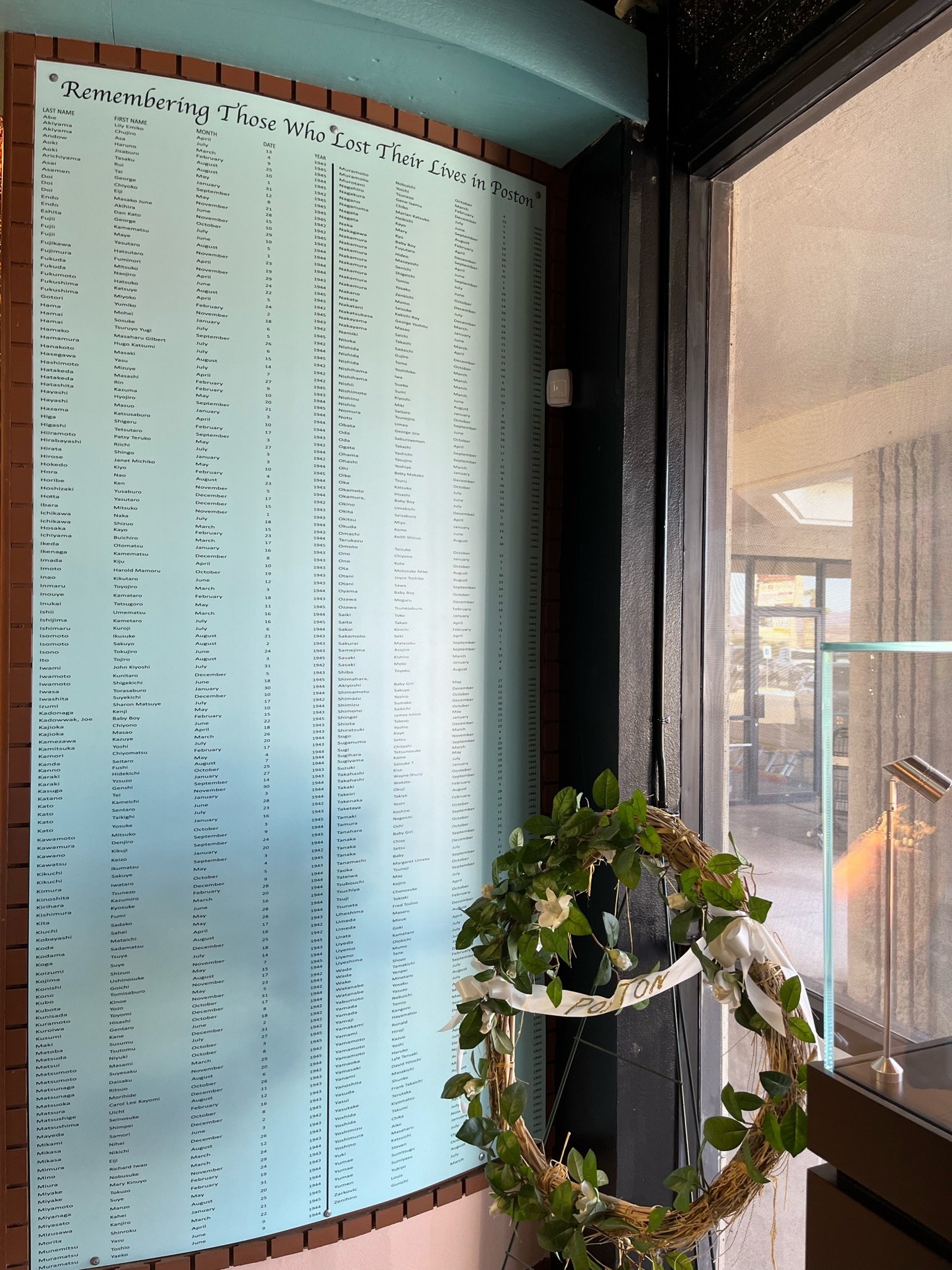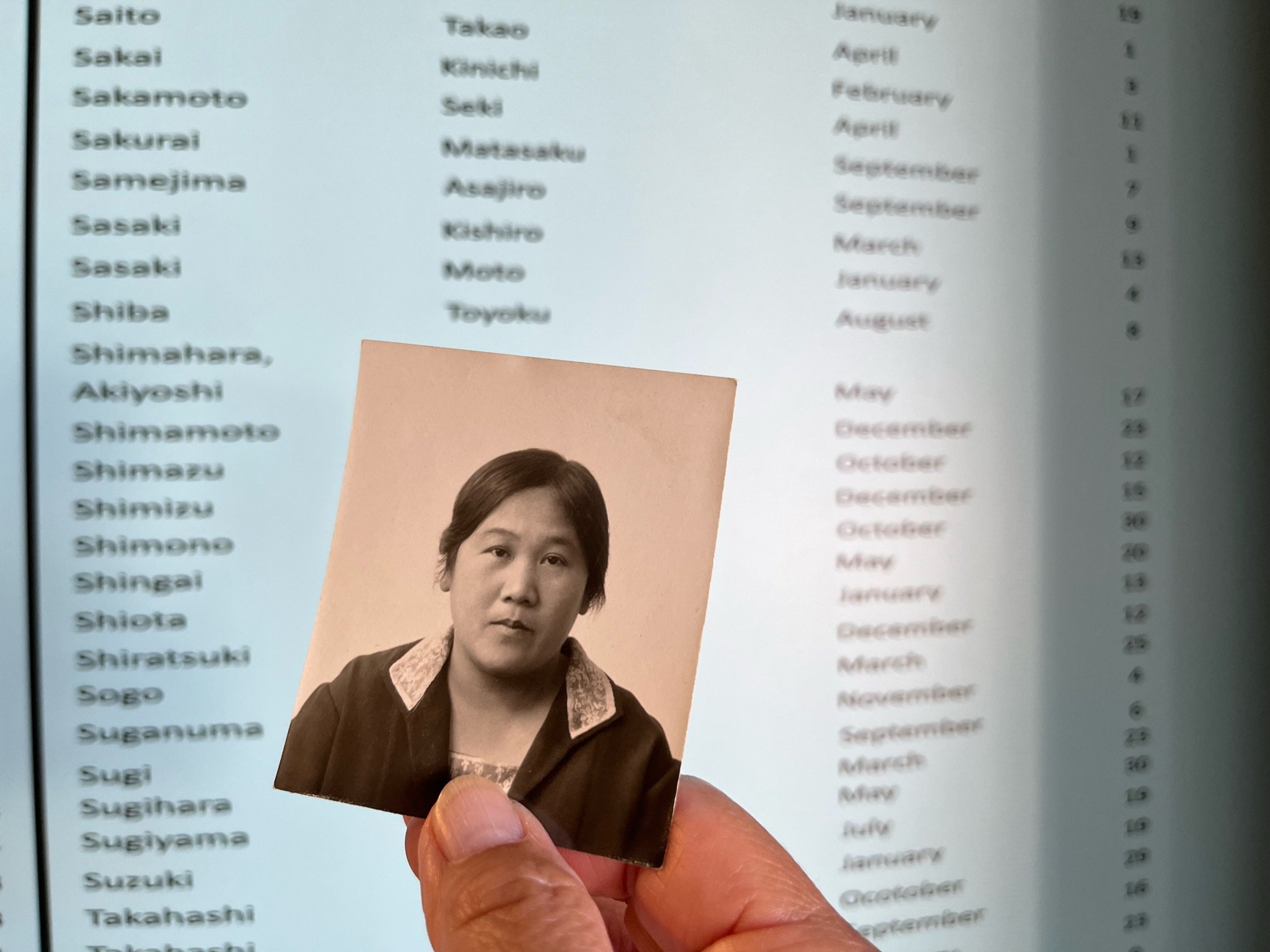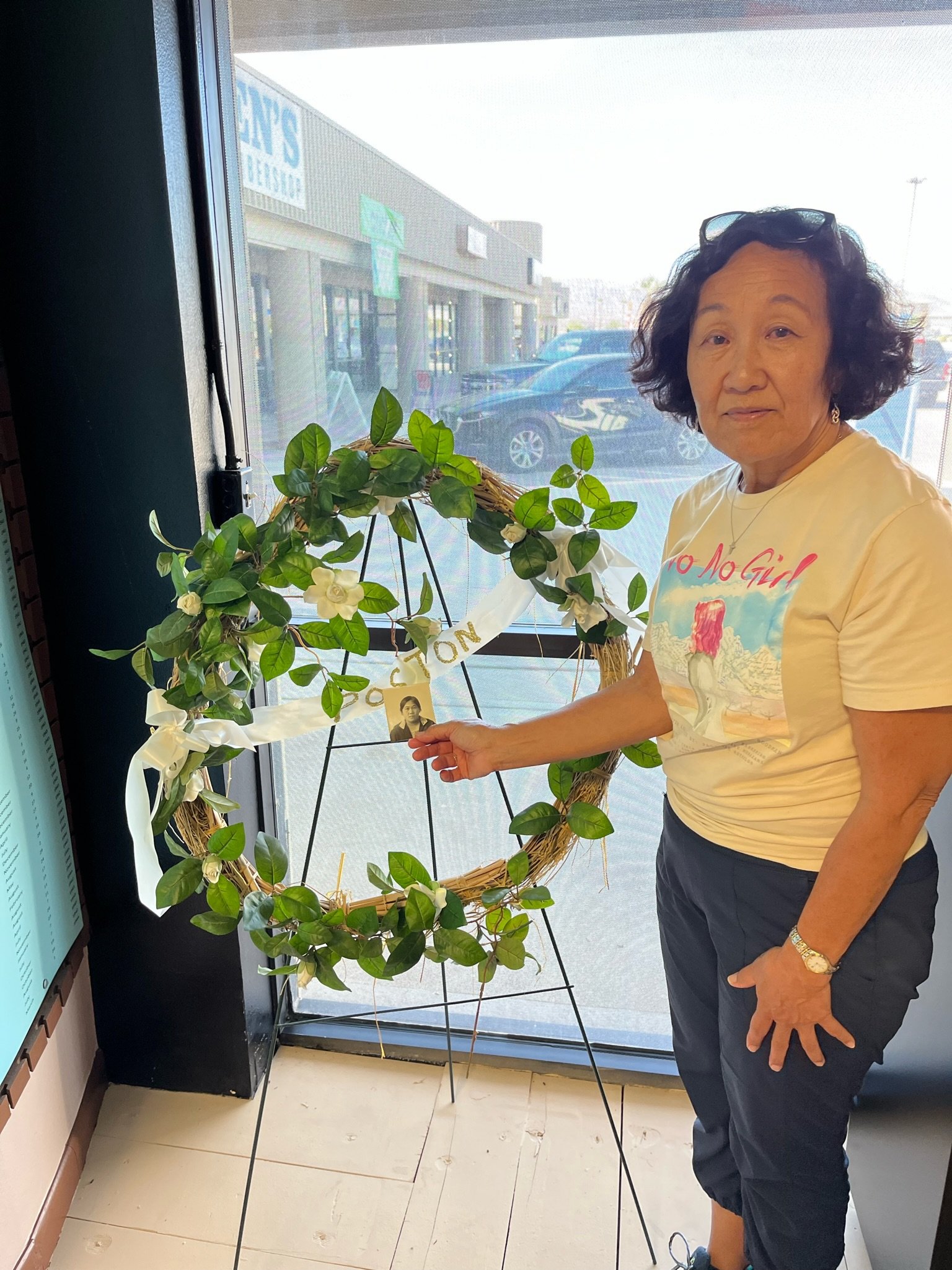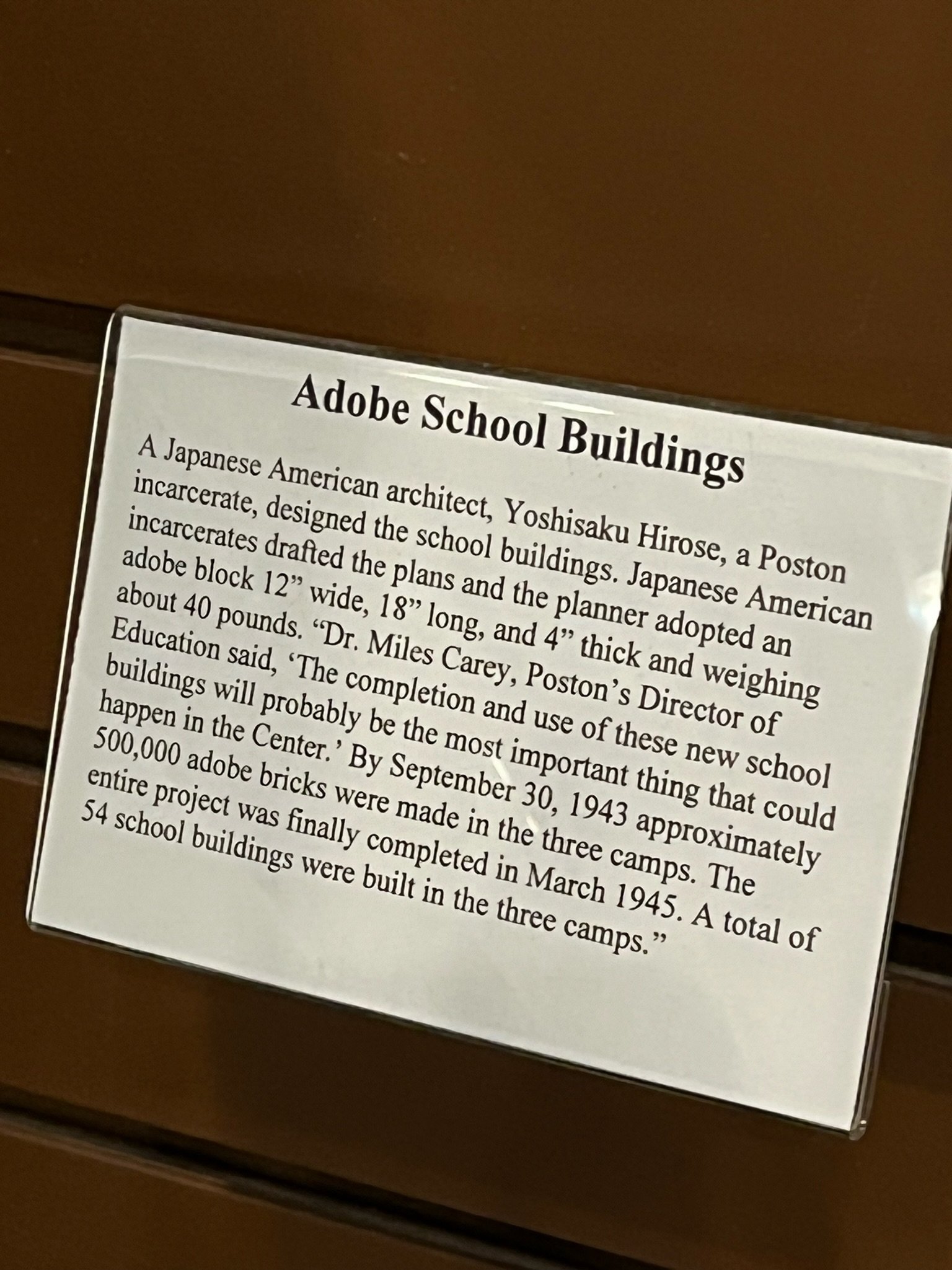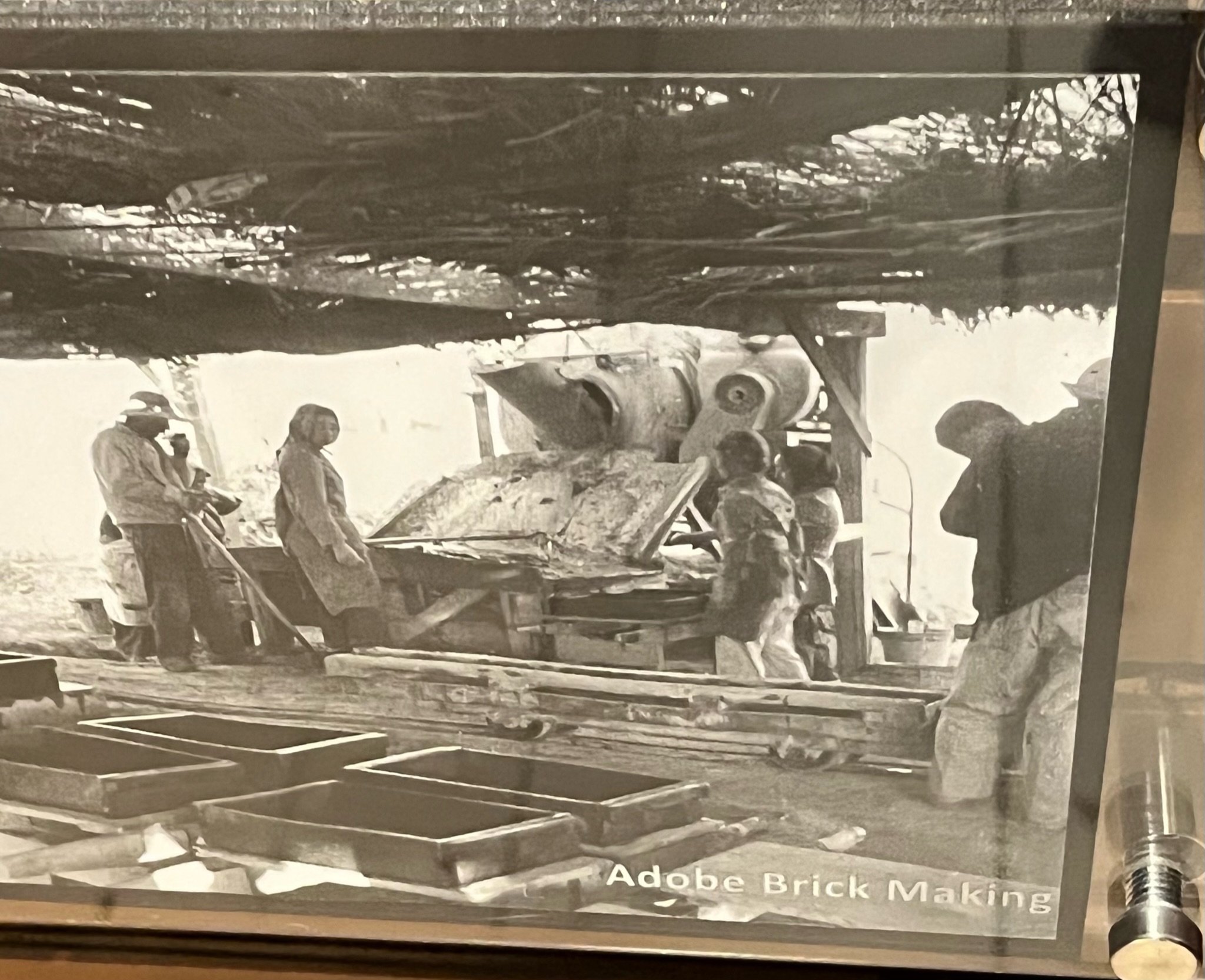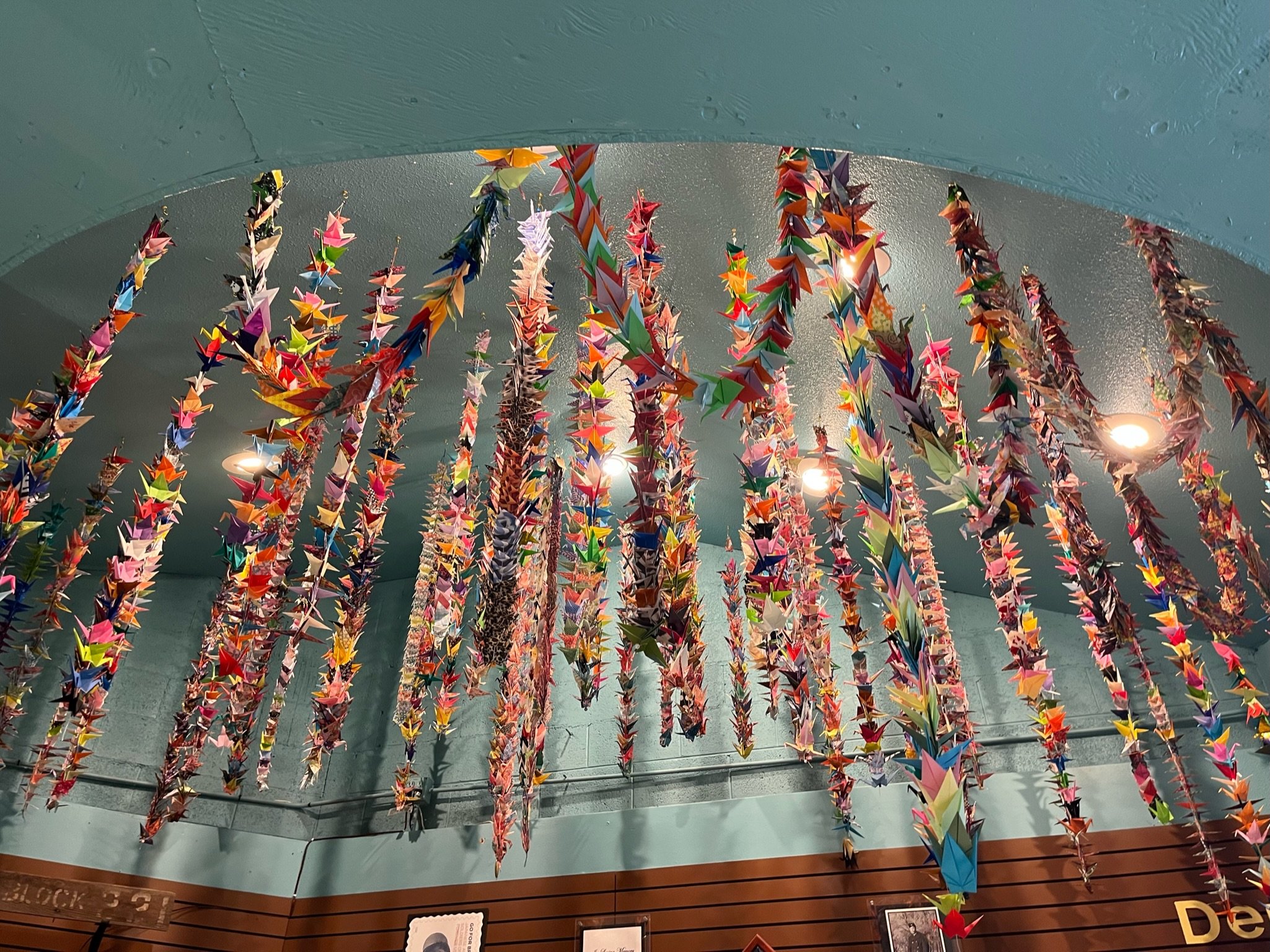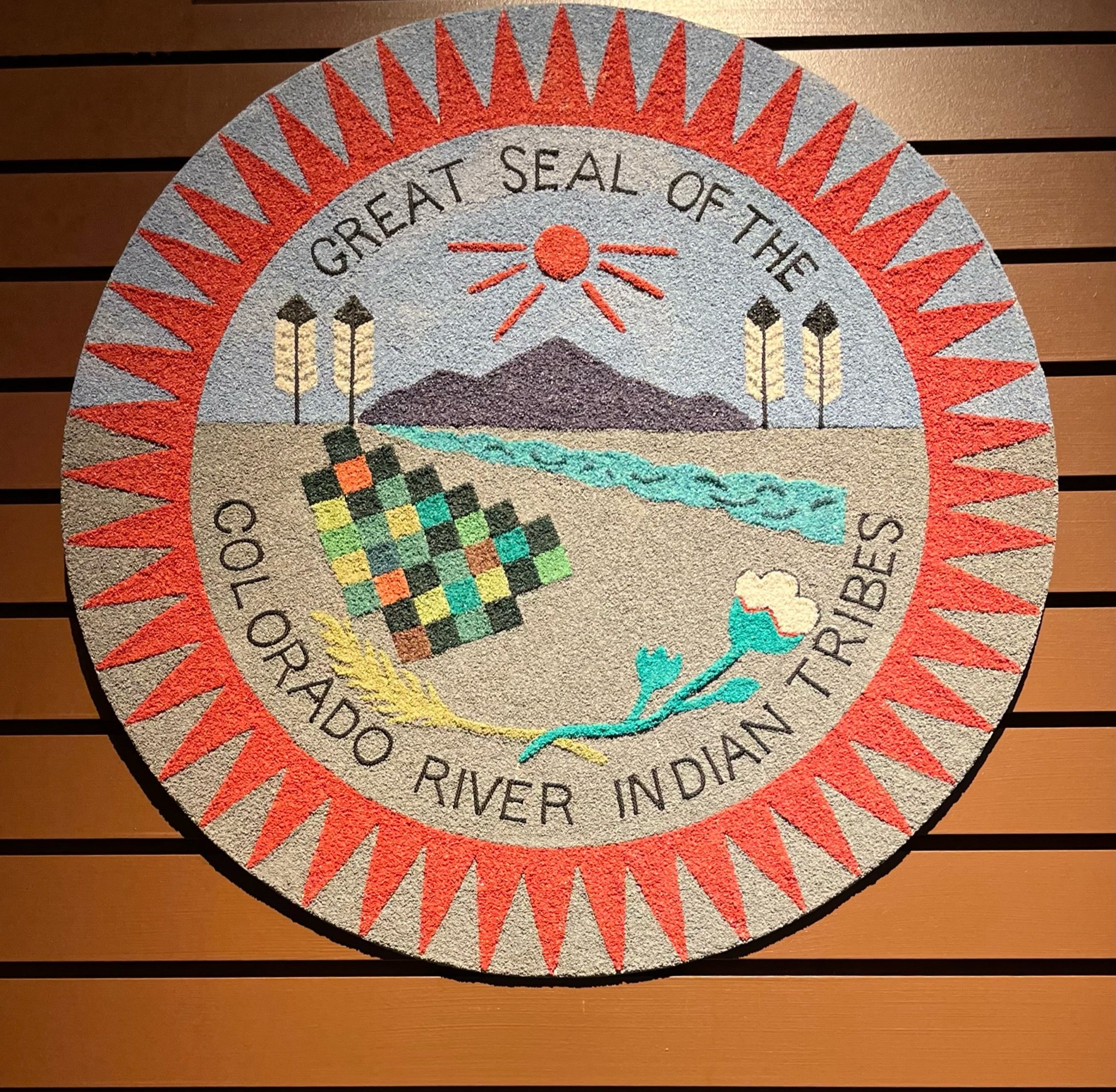My Poston Pilgrimage Experience (Part 1 of 3)
We gather for many reasons, typically with people we already know - family, friends, classmates, neighbors. But this gathering, this pilgrimage was different as 250, mostly strangers, gathered to remember, connect, and learn from each other’s stories of an unwelcome journey by our Japanese American families to a desolate desert.
A pilgrimage is defined as a journey, often to an unknown place, where a person goes in search of new or expanded meaning about the place, themselves, or a higher good such a faith focussed experience like when I journeyed to The Holy Land. This pilgrimage of 250 people came to Poston AZ, population just 186 now, to remember and honor over 17, 814 + Japanese American residents and citizens who were forced to live there during WWII 1942-45. Many also came to learn as their families never spoke of these years; the shame and trauma of this extreme racism left thousands with shame and unhealed wounds.
Located on the Colorado River Indian Tribe (CRIT) reservation, Poston Camps 1, 2, 3 was then a sea of tar-paper uninsulated barracks, each with 4 units where the families would “live” - mostly just sleep - as they ate in communal mess halls and used communal toilet and shower facilities that lacked doors for privacy. They endured the 100-120 degree heat of summer, frigid 20-30 degree cold of winter, and ongoing battles against the dust and wind year round in housing without insulation or central heating/AC. The Native Elders of CRIT never wanted the camps on their land as they wanted no part of the hatred and racism against Japanese immigrants and citizens during WWII. The Tribe knows better than anyone what a forced relocation means.
But this weekend, for the 5th organized pilgrimage since 1945, Japanese American family and friends returned to remember, honor, and learn. I was asked to be the Keynote Banquet Speaker on Saturday night, as well as lead 4 workshops about discovering your family story over the weekend. I found that my family shared more with me than most of the pilgrims returning. Grandchildren came in search of the full story of their heritage. Sansei children who had not been to Poston came to pay tribute to this still untold story of American history. Seniors in their 70s, 80s and 90s returned to remember their youth living in the camp.
Thursday: The Drive to Poston & Arriving in Parker
With my friends Cathy and Michelle Shinto, we drove on Thursday morning from Orange County and it took about 4 hours to get to Parker, the closest town to Poston. (In 1985, my parents went on a pilgrimage and they had to stay in Blythe where the closest motels were then.) In traffic, it took some more like 6 hours to get there out of urban Southern California.
We had to laugh when we got off the 10 East onto the 62 and Google Maps said “Go Straight for 54 miles”...well it was mostly straight, with a few curves and twists and turns. On the way, there weren't any real landmarks, except for what looked like an old gas station overhang where thousands of tennis shoes have been abandoned. This is right next to what looks like an above ground cemetery for Nikes, Converse, and every other brand of sport shoe you can think of! So typical of desert oddities you find in the middle of nowhere!
While it felt like we were driving into the endless desert, when we got to Parker, there was a Walmart, Taco Bell, McDonalds, Hampton Inn, Best Western, and the Blue Water Resort & Casino (operated by CRIT). Anyone going to Parker Dam or Lake Havasu would be familiar with the route or take the 10 East to the 95 north.
People came to this pilgrimage from all over the United States, flying to Phoenix or Las Vegas, but it's still a 3+ hour drive or so. Let’s just say it's remote and not close to much even now.
The Parker Train Station
When we were almost to the Hampton Inn, I saw the Parker Train Station! I bet most people don’t even notice it, but we pulled over for me to take a picture. Back then, it was likely one of the few buildings in the middle of the desert. Even now, Parker is just a small town of about 3,000 people.
This is the train station that was the end of the line for my family, both my mother’s and father’s side, after leaving Orange County in May 1942. From the train station, it's another 16-17 miles to the internment camp site, which they would have taken by bus. I can’t even imagine what they must have thought seeing this train station as they arrived in the middle of the desert. But for me, it connected me back to 1942 as the first stop of my pilgrimage eighty years later.
The Museum
After a quick lunch at Taco Bell (my childhood favorite after school snack on the way to the farm to work), we walked over to the CRIT Museum, nestled in the same shopping center as Taco Bell and Safeway. Newly expanded, the CRIT Museum features a history of the CRIT Nation, its leaders, and beautiful Hopi beadwork and water-tight Chemehuevi basketry! No photos allowed, but trust me the beadwork and baskets are works of beautiful art!
One of the corners of the main display room is the area about the Japanese American internment with photos and some artifacts of this history. One of the key features is the map and layout of each block for Camps 1,2, and 3: all the barracks, mess halls, toilet, shower, laundry and a community room/rec hall. There are also notebooks that have diagrams of each camp, each block and each unit with the name of the family and their names.
I had the camp “address” already for both sides of my family, but it was enlightening to see the actual unit and who were our family’s neighbors! I recognized many of the family names because they continued their friendships for the rest of their lives, many coming back to Orange County and taking up farming again after the war. I think some of the friendships might have begun in camp, but others were friends from Orange County even before the war.
Marlene Shigekawa, President of the Poston Community Alliance, has worked closely with CRIT for over 20 years to develop a relationship with their leaders to hold this history jointly and also keep sharing this history so that it is not forgotten. Though we had talked by phone for months, this was our first time meeting in person and what a delight that was for me.
After looking at the display, Marlene showed me a wall on the side of the display that listed all the people who had died in the camp during 1942-45. One of my grandmothers was listed, Moto Sasaki. It will never be known if she might have survived if she had been in an Orange County modern hospital, rather than a very basic desert camp makeshift hospital. It was sad to see all the names, but even more heart-breaking to see many listed as “Baby Girl” or “Baby Boy,” some with names and others without names. How heart-breaking that must have been for the parents to lose their newborns in camp. Certainly the living conditions were harsh and detrimental to pregnant mothers and newborns - a loss I hadn’t considered before.
While I was there, there were two sisters, Arlene and Virginia, who found themselves in one of the Poston Camp group pictures. I asked them about the group; it was a Christian church gathering with one of their favorite pastors. Despite what they went through as young women over 80 years, they were youthful and joyful ladies and a delight to talk with.
There was so much to unpack that I recount my experience over three blog posts! Be sure to see part 2 and part 3 to learn about my whole experience.



